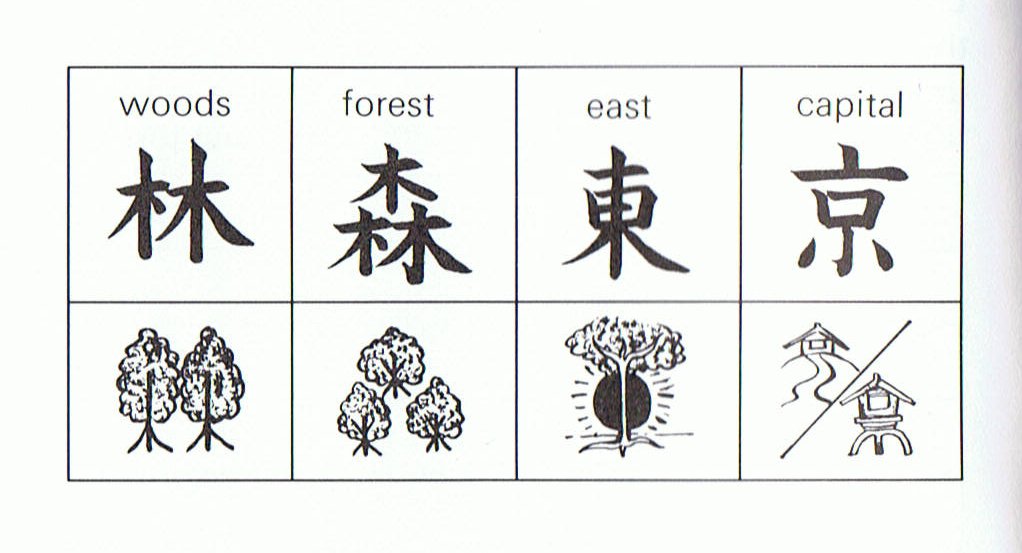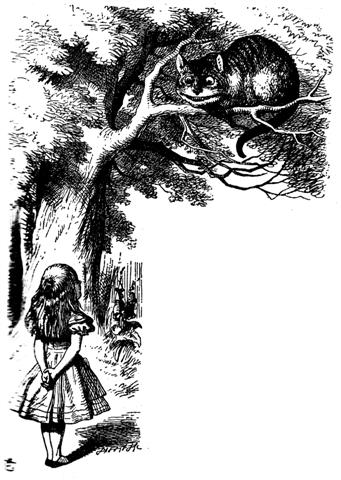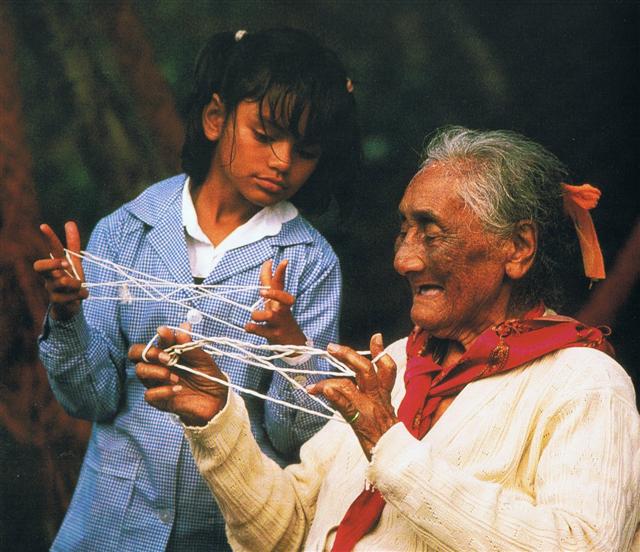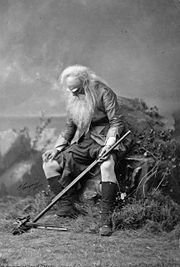|
29
We can imagine the complicated glyph Cb1-6 as an illustration of how the connection to the previous place for the Mill high up in the north (to the left in the glyph - past tense) was cut off and instead (right) the grinding was continuing down far in the south around Dramasa (*320):
While in its preceding place the now salty waters would rush into the 'eye' of the Mill:
... It is a faulty explanation. Anciently it was instead a picture of a wooden pole (the vertical in the middle) for carrying things on, more specifically a pole thrust through a tied sac ... This 'pole thrust through a tied sac' can reasonably be a reference to the midsummer 'tree' and the equatorial fertile 'plane of the earth' (where the gods of the planets moved their pieces around):
Together with the 'spider' resting high up among the 'branches' in the top of the 'tree'. ... Take the lower part of a gourd or hula drum, rounded as a wheel (globe), on which several lines are to be marked and burned in, as described hereafter. These lines are called na alanui o na hoku hookele, the highways of the navigation stars, which stars are also called na hoku ai-aina, the stars which rule the land. Stars lying outside these three lines are called na hoku a ka lewa, foreign, strange, or outside stars. The first line is drawn from Hoku-paa, the fixed or North Star, to the most southerly star of Newe, the Southern Cross. (This hour circle coincides with the meridian on an evening in June, when it would divide the visible sky into halves.) The portion (of the sky) to the right or east of this line (the observer is evidently assumed to be facing north) is called ke ala ula a Kane, the dawning or bright road of Kane, and that to the left or west is called ke alanui maawe ula a Kanaloa, the much-traveled highway of Kanaloa. (Kane and Kanaloa were important gods in the Polynesian pantheon, Kane being associated with light, Kanaloa with darkness.) Then three lines are drawn east and west, one across the northern section indicates the northern limit of the Sun (corresponding with the Tropic of Cancer) about the 15th and 16th days of the month Kaulua (i.e., the 21st or 22nd of June) and is called ke alanui polohiwa a Kane, the black-shining road of Kane. The line across the southern section indicates the southern limit of the Sun about the 15th or 16th days of the month Hilinama (December 22) and is called ke alanui polohiwa a Kanaloa, the black-shining road of Kanaloa. The line exactly around the middle of the sphere is called ke alanui a ke ku'uku'u, the road of the spider ...
... Far away, the Mangaians of old (Austral Islands, Polynesia), who kept the precessional clock running instead of switching over to 'signs', claim that only at the evening of the solstitial days can spirits enter heaven, the inhabitants of the northern parts of the island at one solstice, the dwellers in the south at the other ... Considering the fact that the crossroads of ecliptic and Galaxy are crisis-resistant, that is, not concerned with the Precession, the reader may want to know why the Mangaians thought they could go to heaven only on the two solstitial days. Because, in order to 'change trains' comfortably, the constellations that serve as 'gates' to the Milky Way must 'stand' upon the 'earth', meaning that they must rise heliacally either at the equinoxes or at the solstices. The Galaxy is a very broad highway, but even so there must have been some bitter millenia when neither gate was directly available any longer, the one hanging in midair, the other having turned into a submarine entrance ...
We can see 16 'feathers' (2 * 5 at the rising string to the left + 6 at the central tree itself and up to its apex), which number might suggest the ancient method of waiting for the return of the relevant stars to reappear after their close encounters with the blinding rays from the early morning Sun: ... Like the sun, chiefs of the highest tabus - those who are called 'gods', 'fire', 'heat', and 'raging blazes' - cannot be gazed directly upon without injury. The lowly commoner prostrates before them face to the ground, the position assumed by victims on the platforms of human sacrifice. Such a one is called makawela, 'burnt eyes' ... ... The heads of many of the statues on the terraces once bore a big cylinder (hau hitirau moai), made of red vesicular tuff ... The lower surface has a slight depression which fitted over the top of the image's head. This concavity is not in the center, but near one side so that the cylinder projected over the eyes ... Such a disposition was obeerved by Gonzalez' men ...: The diameter of the crown is much greater than that of the head on which it rests, and its lower edge projects greatly beyond the forehead of the figure: a position which excites wonder that it does not fall. I was able to clear up this difficulty on making an examination of another smaller statue from whose head there projected a kind of tenon, constructed to fit into a sort of slot or mortice corresponding to it in the crown; so that by this device the latter is sustained notwithstanding its overlapping the forehead. Roggeveen ... mistook the hats for baskets ... The present natives call the cylinders hau hitirau moai. Hitirau is the name of the tuff from which these cylinders are made ... Jaussen ... gives the word pukao which in Roussel's dictionary means crown. The original meaning of pukao is topknot ... The connection to the past (left) had evidently been broken. Yet twice 5 double 'feathers' (→ 10 months) seems to have remained in living memory. Possibly 10 'feathers' could also have been the result of a reflection upon those 364 - 354 = 10 extra days coming beyond 12 * 29½. Beyond the apex of the tree there are 5 further 'feathers' on its descending side. The bottom string should not be counted as such a feather. Instead it could represent the beginning of a kaikai string. Whereas in contrast the bottom string at left is not attatched to the 'trunk' but to the tip of one of its 'branches' ('feathers'). ... Ta'aroa sat in his heaven above the earth and conjured forth gods with his words. When he shook off his red and yellow feathers they drifted down and became trees ... We need to have eyes as sharp as those of an Eagle (or as the edge of a Knife).
... string games were used up to the point when Aagjuuk appeared, but not after that ... At right (where the Mill supposedly landed) there are 2 great double feathers on one side and 4 on the other. 4 + 8 = 12 'great months'. ... From the natives of South Island [of New Zealand] White [John] heard a quaint myth which concerns the calendar and its bearing on the sweet potato crop. Whare-patari, who is credited with introducing the year of twelve months into New Zealand, had a staff with twelve notches on it. He went on a visit to some people called Rua-roa (Long pit) who were famous round about for their extensive knowledge. They inquired of Whare how many months the year had according to his reckoning. He showed them the staff with its twelve notches, one for each month. They replied: 'We are in error since we have but ten months. Are we wrong in lifting our crop of kumara (sweet potato) in the eighth month?' Whare-patari answered: 'You are wrong. Leave them until the tenth month. Know you not that there are two odd feathers in a bird's tail? Likewise there are two odd months in the year.' The grateful tribe of Rua-roa adopted Whare's advice and found the sweet potato crop greatly improved as the result ... Although there in truth are 4 'double feathers' on both sides those at left had been divided in half - as if a mirror had been placed in the middle - causing the bottom pair to look upside down. I think inverted 'feather branches' should refer to times when the Sun light was absent → 364 - 29(0) = 74 and 182 - 148 / 2 = 108, etc, etc.
And because the 'double feathers' down in the southern region were essentially greater (as observed from Easter Island) than those in the north we should presumably count them twice - and like the double months of the Moon they were broken in half → 29½ + 29½ = 59. Twice 16 = 32(0) suggests *320 at Dramasa. And *320 = *80 + *240 (→ 3 * 80).
|











